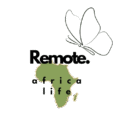Table of Contents
From Overwhelmed to Organized My Remote Work Journey
When I first started working remotely, everything felt chaotic.
I was juggling emails, client deadlines, brainstorming content ideas, and trying to stay visible online — all while figuring out how to actually get paid. There were days I opened 10 browser tabs just to do one task, and still ended up feeling like I hadn’t done enough.
What changed everything for me wasn’t hiring a team or taking some expensive course.
It was learning how to use a few simple tools — Canva, Notion, and ChatGPT — to manage my time, build my personal brand, and work smarter, not harder.
These three tools became my behind-the-scenes support system. Canva made me look like a pro (even when I wasn’t a designer). Notion helped me keep my projects, content plans, and client tasks all in one place. And Chatgbt? It became my daily brainstorming partner — giving me ideas, outlines, and a head start on content creation when my brain felt stuck.
In this post, I’ll show you exactly how I use each of these tools in my remote work routine — with real examples, practical tips, and strategies that you can start using today, even if you’re just starting out or using free versions.
Whether you’re a freelancer, content creator, or building a side hustle from your bedroom, these tools can help you do more with less — and build a career that actually works for you..
Why the Right Tools Matter for Remote Workers
When you work remotely — especially as a freelancer or solo creator — you’re basically your own everything: project manager, marketer, designer, admin assistant, and sometimes even tech support.
That’s a lot to handle.
And without the right tools, it’s easy to fall into the trap of doing too much, wasting time, or just feeling stuck. I’ve been there — writing blog posts in Google Docs, losing track of tasks in random notebooks, and trying to design social posts that looked… let’s just say “not so professional.”
But here’s the truth:
You don’t need to use 20 different apps to stay productive.
You don’t need to spend hundreds of dollars on tools to look professional.
What you do need is a simple, flexible system that helps you stay organized, deliver great work, and build your reputation online.
That’s exactly what Canva, Notion, and ChatGPT have helped me do.
- Canva makes it easy to create professional graphics — even if you’ve never studied design.
- Notion keeps your goals, to-do lists, and content organized in one digital workspace.
- ChatGPT helps you brainstorm ideas, write faster, and learn new things without getting stuck.
When you use tools that work with you (not against you), remote work becomes less stressful and more enjoyable. You gain confidence. You show up more consistently. And clients notice.
In the next sections, I’ll walk you through exactly how I use each of these tools in my own workflow — no tech jargon, no fluff. Just simple, smart systems you can copy and make your own.
How I Use Canva to Build My Brand & Client Work
When I started freelancing, one of my biggest challenges was design. I didn’t have the skills, the budget for professional tools, or time to learn complicated software. But I still needed graphics — for my social media, portfolio, proposals, and client projects.
That’s when I discovered Canva. It’s a free design tool that changed everything for me.
Creating Professional Visuals Without Design Experience
Canva makes it incredibly easy to create polished, eye-catching visuals even if you’ve never designed anything before. I started by using templates for Instagram posts and blog banners. Over time, I customized them with my brand colors and fonts, giving my online presence a more professional and consistent look.
For client work, I now use Canva to create:
- Proposal covers and service brochures
- Client social media content
- Simple video reels and YouTube thumbnails
- Ebooks, media kits, and lead magnets
The drag-and-drop interface means I can create quality designs quickly — without starting from scratch.
Building a Consistent Personal Brand
One of the smartest things I did was set up a brand kit inside Canva. It includes my logo, color palette, and fonts. That way, every design I create — from a resume to a content calendar — feels on-brand.
This consistency helps build trust. Whether a client sees my portfolio, social media page, or proposal, the message is clear: I take my work seriously.
A Real Example From My Workflow
When I was pitching content services to a new client, I created a one-page visual proposal using a Canva template. It took me under 30 minutes and made a much stronger impression than a plain text email.
That small extra step helped me stand out — and I got the job.
Canva helps me show up with confidence, even when I’m still growing my skills behind the scenes. It’s not just a design tool; it’s a key part of how I present myself and deliver value.
How I Use Notion to Stay Organized and Plan Projects
Working remotely often means juggling multiple projects, clients, and personal goals — all at the same time. In the beginning, I tried to manage everything using notebooks, sticky notes, and a messy folder of Google Docs. It didn’t work.
Then I found Notion — and it quickly became my all-in-one digital workspace.
Turning Chaos Into a Simple, Custom System
Notion helped me replace scattered tools with a single organized hub. I use it to manage almost every part of my remote work life:
- Weekly to-do lists
- Client project trackers
- Blog and content calendars
- Learning goals and notes
- Templates for recurring tasks
What makes Notion powerful is how flexible it is. You don’t need to follow someone else’s system — you can build your own, one piece at a time.
Managing Client Projects and Deadlines
For each client, I create a dedicated page in Notion. Inside, I keep:
- Project brief and communication notes
- Task lists with due dates
- Links to files and assets
- A timeline view to track progress
This helps me stay on top of what’s due, what’s in progress, and what needs attention — all in one place. Clients appreciate how organized I am, and I waste less time switching between tools.
Planning My Content and Goals
I also use Notion to plan and track my own growth. I keep a content calendar with blog post ideas, deadlines, and promotion plans. I have a separate section where I write down skill-building goals, video ideas, and tools I want to explore.
It’s like having a personal assistant — one that never forgets anything.
A Real Example From My Workflow
Before using Notion, I missed a client deadline because I forgot to follow up on a revision. Since building a simple dashboard for all my active projects, I haven’t missed a single task. I check my Notion every morning, and it keeps me focused.
If you work remotely and feel overwhelmed trying to stay organized, Notion is worth learning. You can start with a simple to-do list and grow from there. For me, it’s the tool that brought structure to my freelance career.
How I Use Chatgbt to Save Time, Brainstorm, and Write
As a remote worker, a big part of my job involves thinking, writing, and communicating clearly — whether it’s writing blog posts, creating proposals, replying to emails, or planning social media content. But some days, the ideas just don’t flow.
That’s where Chatgbt comes in. It’s become one of the most useful tools in my workflow — not to replace my voice, but to support and speed up my process.
Writing Support That Keeps Things Moving
I use ChatGPT to help with:
- Outlining blog posts and articles
- Drafting social media captions
- Creating rough versions of proposals or emails
- Rewriting and improving copy when I feel stuck
The key is that I don’t copy and paste everything. I treat it like a first draft or a brainstorming partner. I always rewrite, edit, and add my personal tone before using anything in my work.
It’s not about shortcuts — it’s about getting unstuck and staying productive.
Brainstorming Ideas and Planning Content
Whenever I feel blocked creatively, I ask Chatgbt things like:
- “Give me 10 blog post ideas for freelance writers.”
- “Help me plan a 5-day content calendar for Instagram.”
- “List common mistakes beginners make when working remotely.”
This saves time and gives me a fresh angle when I’m too tired or overwhelmed to think clearly.
Learning and Growing on the Go
Chatgbt also helps me learn faster. I can ask it to explain a concept, summarize a tutorial, or suggest resources. It’s like having a virtual coach I can access anytime — without waiting for a reply or watching a 20-minute video just to get one answer.
A Real Example From My Workflow
When I wanted to write a long-form article on how to start freelancing without taking paid courses, I used Chatgbt to generate the outline. Then I filled in the real-life tips, examples, and tone based on my own experience. The result was a post that felt authentic but took half the time to draft.
For any remote worker dealing with content, communication, or planning, Chatgbt is a valuable sidekick. Used wisely, it helps you sound more professional, stay productive, and think more clearly — even on your busiest days.
How These 3 Tools Work Together
On their own, Canva, Notion, and Chatgbt are powerful. But when you use them together as part of a simple system, they become even more effective. Each tool supports a different part of my remote work process — and when combined, they help me work faster, stay organized, and present myself professionally.
A Typical Workflow Example
Let’s say I’m creating a blog post or a content offer for a client. Here’s how I use all three tools in one project:
1. Plan in Notion
I start by outlining the task in Notion. I write down the project goal, deadline, and checklist. I might also create a content calendar or tag it under a client dashboard so I stay on track.
2. Brainstorm and Draft with Chatgbt
Next, I open Chatgbt to help with structure, headline ideas, or a rough first draft. I use it to organize my thoughts, explore different angles, or save time when I’m writing at scale.
3. Design in Canva
Once the content is written, I move to Canva to create graphics — maybe a featured image for the blog post, a social media version of the headline, or a branded document if it’s a client delivery.
This system helps me keep the creative and admin sides of my work connected. Instead of jumping between random apps or losing track of tasks, I move through each phase of the project with a clear structure and the right tool at each step.
Why This Workflow Works
- It keeps things simple: I’m not trying to master 10 different apps. Just three that work well together.
- It saves time: I don’t start from scratch every time. Each tool builds on the other.
- It keeps me consistent: Whether I’m doing client work or personal projects, my workflow stays the same — and that means fewer mistakes, better focus, and more polished results.
These tools don’t just help me get work done — they help me grow my career with confidence, even as a solo worker.
Tips for Remote Workers Using These Tools
If you’re just starting out, it’s easy to feel overwhelmed by new platforms and digital tools. But you don’t have to master everything at once. The goal isn’t to become a Canva expert or Notion wizard overnight — it’s to build systems that support your work and help you grow at your own pace.
Here are some simple tips that helped me get started and stay consistent with these tools:
1. Start Simple, Then Build
You don’t need a complex setup to be productive. Begin with one tool at a time. Maybe you use Canva to create your resume. Or Notion to track your job applications. As you get more comfortable, you’ll naturally find ways to connect the tools and improve your process.
2. Use the Free Versions First
All three tools — Canva, Notion, and Chatgbt — offer generous free plans. Don’t feel pressured to upgrade right away. Learn the basics, see what features you actually need, and upgrade only if it makes your workflow easier or more profitable.
3. Focus on Solving Real Problems
Ask yourself: What do I need help with right now?
- Are you struggling to keep track of tasks? Start with a Notion to-do list.
- Do you need better-looking client proposals? Try a Canva template.
- Need help writing your service description? Ask Chatgbt for a draft.
This way, you’re not using tools just to stay busy — you’re using them to actually make progress.
4. Reuse and Repurpose
Create templates in Canva and Notion to save time. For example, I have a reusable blog post checklist in Notion and a few branded Canva templates I update for each new client or project. It saves hours of work and helps me stay consistent.
5. Stay Focused on Your Bigger Goal
Tools are only useful if they move you closer to your goals — whether that’s getting freelance clients, building a personal brand, or managing remote work better. Don’t get distracted trying to do everything. Focus on what helps you grow.
Conclusion: Simple Tools, Real Growth
Remote work can feel overwhelming — especially when you’re handling everything on your own. But with the right tools, even solo workers can stay organized, look professional, and grow with confidence.
You don’t need a big budget or fancy software to succeed. Canva helps you present your work beautifully. Notion gives you structure and clarity. Chatgbt saves time and supports your creativity. Used together, these tools can help you build a system that supports your long-term career goals — whether you’re freelancing, content creating, or building your own remote brand.
The most important thing? Start with what you have. Use what works. Build as you grow.
Because the real key to remote work success isn’t just tools — it’s how you use them.

I’m Branche De Jesus UMUTONI, founder of Remote Africa Life — a digital space where faith, resilience, and remote work meet. After turning challenges into opportunities, I now help others find courage to follow their calling and create a life they love. Join me on this journey of purpose and possibility.





